L'Année dernière à Marienbad (released in the US as Last Year at Marienbad and in the UK as Last Year in Marienbad) is a 1961 French-Italian Left Bank film directed by Alain Resnais from a screenplay by Alain Robbe-Grillet.
| Last Year at Marienbad | |
|---|---|
Theatrical film poster | |
| Directed by | Alain Resnais |
| Produced by | Pierre Courau Raymond Froment Robert Dorfmann Anatole Dauman |
| Written by | Alain Robbe-Grillet |
| Starring | Delphine Seyrig Giorgio Albertazzi Sacha Pitoëff |
| Music by | Francis Seyrig |
| Cinematography | Sacha Vierny |
| Edited by | Jasmine Chasney Henri Colpi |
| Distributed by | Cocinor |
Release date |
|
Running time | 94 minutes |
| Country | France Italy |
| Language | French |
Set in a palace in a park that has been converted into a luxury hotel, it stars Delphine Seyrig and Giorgio Albertazzi as a woman and a man who may have met the year before and may have contemplated or started an affair, with Sacha Pitoëff as a second man who may be the woman's husband. The characters are unnamed.
The film is famous for its enigmatic narrative structure, in which time and space are fluid, with no certainty over what is happening to the characters, what they are remembering, and what they are imagining. Its dreamlike nature has both fascinated and baffled viewers; many have hailed the work as a masterpiece, although others have found it incomprehensible.
Screenplay
In an ornate baroque hotel, populated by wealthy couples who socialise with each other, a single man approaches a woman. He claims they met the year before at Marienbad and she asked him to wait a year before deciding on a future together. The woman insists they have never met. The man tries to rekindle what he claims is the tenderness they shared, while she rebuffs him and contradicts his account. A second man repeatedly asserts his dominance over the first man, including beating him every time at a mathematical game (a version of Nim).
Through ambiguous flashbacks and disorienting shifts of time and location, the film explores the relationships between the three characters. Conversations and events are repeated in several places in the building and grounds, and there are numerous tracking shots of the hotel's corridors, with ambiguous and repetitive voiceovers. No certain conclusion is offered: the man may have consummated his longing for the woman; she may have agreed to run away with him; her jealous husband may have shot her, or the man himself may have killed her.
- Giorgio Albertazzi, as the man
- Delphine Seyrig, as the woman
- Sacha Pitoëff, as the second man, who may be the woman's husband
The characters are unnamed in the film; in the published screenplay, the woman is referred to with the letter "A", the first man is "X", and the man who may be her husband is "M".
L'Année dernière à Marienbad was created out of an unusual collaboration between its writer Alain Robbe-Grillet and its director Alain Resnais. Robbe-Grillet described its basis:
Alain Resnais and I were able to collaborate only because we had seen the film in the same way from the start, and not just in the same general outlines but exactly, in the construction of the least detail as in its total architecture. What I wrote might have been what was already in mind; what he added during the shooting was what I might have written. ...Paradoxically enough, and thanks to the perfect identity of our conceptions, we almost always worked separately.
Robbe-Grillet wrote a screenplay which was very detailed, specifying not only the décor and gestures but also the placement and movement of the camera and the sequencing of shots in the editing. Resnais filmed the script with great fidelity, making only limited alterations which seemed necessary. Robbe-Grillet was not present during the filming. When he saw the rough-cut, he said that he found the film just as he had intended it, while recognising how much Resnais had added to make it work on the screen and to fill out what was absent from the script. Robbe-Grillet then published his screenplay, illustrated by shots from the film, as a "ciné-roman" (ciné-novel).
Despite the close correspondence between the written and filmed works, numerous differences between them have been identified. Two notable examples are the choice of music in the film (Francis Seyrig's score introduces extensive use of a solo organ), and a scene near the end of the film in which the screenplay explicitly describes a rape, whereas the film substitutes a series of repeated bleached-out travelling shots moving towards the woman. In subsequent statements by the two authors of the film, it was partly acknowledged that they did not entirely share the same vision of it.
Filming took place over a period of ten weeks between September and November 1960. The locations used for most of the interiors and the gardens were the palaces of Schleissheim and Nymphenburg, including the Amalienburg hunting lodge, and the Antiquarium of the Residenz, all of them in and around Munich. Additional interior scenes were filmed in the Photosonore-Marignan-Simo studios in Paris. (No filming was done in the Czech spa town of Marienbad — and the film does not allow the viewer to know with certainty which, if any, scenes are supposed to be located there.) Filming was in black-and-white in Dyaliscope wide-screen.
Style
The film continually creates an ambiguity in the spatial and temporal aspects of what it shows, and creates uncertainty in the mind of the spectator about the causal relationships between events. This may be achieved through the editing, giving apparently incompatible information in consecutive shots, or within a shot which seems to show impossible juxtapositions, or by means of repetitions of events in different settings and décor. These ambiguities are matched by contradictions in the narrator's voiceover commentary. Among the notable images in the film is a scene in which two characters (and the camera) rush out of the château and are faced with a tableau of figures arranged in a geometric garden; although the people cast long dramatic shadows (which were painted on the ground), the trees in the garden do not (not real trees but constructions).
The manner in which the film is edited challenged the established classical style of narrative construction. It allowed the themes of time and the mind and the interaction of past and present to be explored in an original way. As spatial and temporal continuity is destroyed by its methods of filming and editing, the film offers instead a "mental continuity", a continuity of thought.
In determining the visual appearance of the film, Resnais said that he wanted to recreate "a certain style of silent cinema", and his direction as well as the actors' make-up sought to produce this atmosphere. He even asked Eastman Kodak if they could supply an old-fashioned filmstock that would 'bloom' or 'halo' to create the look of a silent film (they could not). Resnais showed his costume designer photographs from L'Inhumaine and L'Argent, for which great fashion designers of the 1920s had created the costumes. He also asked members of his team to look at other silent films including Pabst's Pandora's Box: he wanted Delphine Seyrig's appearance and manner to resemble that of Louise Brooks but she had cut her hair which necessitated the smooth shaped hairstyle. Most of Seyrig's dresses in the film were designed by Chanel. The style of certain silent films is also suggested by the manner in which the characters who populate the hotel are mostly seen in artificial poses, as if frozen in time, rather than behaving naturalistically.
The films which immediately preceded and followed Marienbad in Resnais's career showed a political engagement with contemporary issues (the atomic bomb, the aftermath of the Occupation in France, and the then taboo subject of the war in Algeria); Marienbad however was seen to take a completely different direction and to focus principally on style. Commenting on this departure, Resnais said: "I was making this film at a time when I think, rightly, that one could not make a film, in France, without speaking about the Algerian war. Indeed I wonder whether the closed and stifling atmosphere of L'Année does not result from those contradictions."
Contemporary critics' responses to the film were polarized. Controversy was fuelled when Robbe-Grillet and Resnais appeared to give contradictory answers to the question whether the man and woman had actually met at Marienbad last year or not; this was used as a means of attacking the film by those who disliked it.
In 1963 the writer and film-maker Ado Kyrou declared the film a total triumph in his influential Le Surréalisme au cinéma, recognizing the ambiguous environment and obscure motives within the film as representing many of the concerns of surrealism in narrative cinema. Another early supporter, the actor and surrealist Jacques Brunius, declared that "Marienbad is the greatest film ever made".
Less reverently, Marienbad received an entry in The Fifty Worst Films of All Time, by Harry Medved, with Randy Dreyfuss and Michael Medved. The authors lampooned the film's surrealistic style and quoted numerous critics who found it to be pretentious and/or incomprehensible. The film critic Pauline Kael called it "the high-fashion experimental film, the snow job at the ice palace... back at the no-fun party for non-people".
The movie inspired a brief craze for the Nim variation played by the characters.
Although the film remains disparaged by some critics, Last Year at Marienbad has come to be regarded by many as one of Resnais' greatest works. Review aggregation site They Shoot Pictures, Don't They has found it to be the 83rd most acclaimed movie in history, and it received 23 total votes in the British Film Institute's decennial Sight & Sound polls.
In July 2018, it was selected to be screened in the Venice Classics section at the 75th Venice International Film Festival.
Interpretations
Numerous explanations of the film's events have been put forward: that it is a version of the Orpheus and Eurydice myth; that it represents the relationship between patient and psychoanalyst; that it all takes place in the woman's mind; that it all takes place in the man's mind, and depicts his refusal to acknowledge that he has killed the woman he loved; that the characters are ghosts or dead souls in limbo; etc.
Some have noted that the film has the atmosphere and the form of a dream, that the structure of the film may be understood by the analogy of a recurring dream, or even that the man's meeting with the woman is the memory (or dream) of a dream.
Others have heeded, at least as a starting point, the indications given by Robbe-Grillet in the introduction to his screenplay: "Two attitudes are then possible: either the spectator will try to reconstitute some 'Cartesian' scheme – the most linear, the most rational he can devise – and this spectator will certainly find the film difficult if not incomprehensible; or else the spectator will let himself be carried along by the extraordinary images in front of him and to this spectator, the film will seem the easiest he has ever seen: a film addressed exclusively to his sensibility, to his faculties of sight, hearing, feeling."
Robbe-Grillet offered a further suggestion of how one might view the work: "The whole film, as a matter of fact, is the story of a persuading : it deals with a reality which the hero creates out of his own vision, out of his own words."
Resnais for his part gave a more abstract explanation of the film's purpose: "For me this film is an attempt, still very crude and very primitive, to approach the complexity of thought, of its processes."

Request Movie Now
Watch movie Last Year At Marienbad online on Amazon
Watch movie Last Year At Marienbad online
Watch The Movie On PrimeDarling Full HD Movie Download
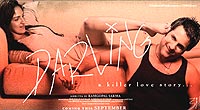
Bulandi Full HD Movie Download
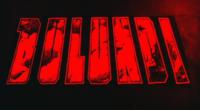
Siva Full HD Movie Download

Abdullah Full HD Movie Download
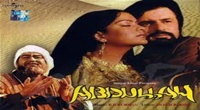
Dum Dum Diga Diga Full HD Movie Download
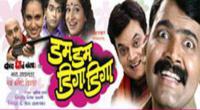
Meharbaan (1967) Full HD Movie Download
.jpg)
Cheppu Full HD Movie Download

Angaarey (1998) Full HD Movie Download
.jpg)
Jaanbaaz (1986) Full HD Movie Download
.jpg)
Hum Sub Chor Hain (1956) Full HD Movie Download
.jpg)
Aanari Dada Full HD Movie Download

Janaki Ramudu Full HD Movie Download
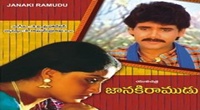
Allari Pilla Anumanapu Pellam Full HD Movie Download
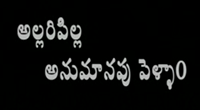
Cats and Dogs Full HD Movie Download

Dupe Dupe Dupe Full HD Movie Download
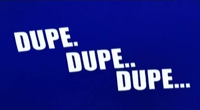
Iru Medaigal Full HD Movie Download
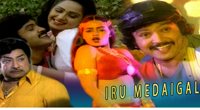
Ezhai Jaathi Full HD Movie Download
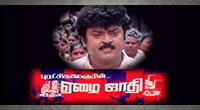
Dhanush Full HD Movie Download

Needa The Shadow Full HD Movie Download
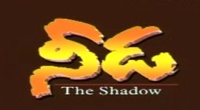
Dil Bole Hadippa! Full HD Movie Download
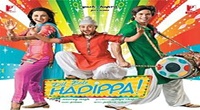
Mohabbatein Full HD Movie Download
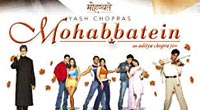
Download latest Movie from bollywood
- 1> baaghi 3
- 2> THE SKY IS PINK MOVIE FULL STORY AND REVIEW
- 3> Luka Chuppi
- 4> TO ALL THE BOYS I’VE LOVED BEFORE
- 5> Kabir Singh
- 6> Street Dancer 3D
- 7> Simmba
- 8> Gone Girl
- 9> The Girl Who Lived
- 10> Ludo
- 11> DILWALE DULHANIA LE JAYENGE
- 12> GUILTY
- 13> The Godfather
- 14> Adventures of Rusty
- 15> Sooryavanshi
- 16> Satyameva Jayate 2
- 17> Thappad
- 18> Bhool Bhulaiyaa 2
- 19> KGFChapter 2
- 20> Mardaani 2
- 21> Pinjar
- 22> Shivaji maharaj
- 23> Ek Villian 2
- 24> Hungama 2
- 25> Divergent
- 26> Mumbai Saga
- 27> The Internship
- 28> HIT (telugu)
- 29> Panga
- 30> The perfect date
- 31> 16 December
- 32> Gopala Gopala (Telugu)
- 33> Brahmastra
- 34> Gangubai Kathiawadi
- 35> Manmadhudu
- 36> Nenu local
- 37> Mahanati
- 38> Shatamanam bavathi
- 39> Lagaan
- 40> After
- 41> MOM
- 42> Shamshera
- 43> Raguvaran BTech
- 44> Khakee
- 45> The villain
- 46> OM
- 47> Mr. perfect
- 48> Bueatifull mind
- 49> Hichki
- 50> Gabbar Singh
- 51> Jogi
- 52> Before Sunrise
- 53> Before Sunset
- 54> Before Midnight
- 55> The Big Bull
- 56> Top Gun: Maverick
- 57> The Purge
- 58> The Sky is Pink
- 59> Laxmmi Bomb
- 60> Sadak 2
- 61> Sufna
- 62> Prithviraj
- 63> PK
- 64> Coolie No 1(2020)
- 65> Black Widow
- 66> Dear Zindagi
- 67> Dil Bechara
- 68> PHIR HERA PHERI
- 69> WAR
- 70> Dostana
- 71> RRR: Roudram Ranam Rudhiram
- 72> Maidan
- 73> Dabbang 3
- 74> Chhalaang
- 75> life as we know it
- 76> SherShaah
- 77> Sandeep Aur Pinky Faraar
- 78> Event Horizon
- 79> 83
- 80> Radhe: Your Most Wanted Bhai
- 81> Gunjan Saxena: The Kargil Girl
- 82> Mr India
- 83> Vivah
- 84> Anokha Bandhan
- 85> Ghost
- 86> Bhoot: Part One - The Haunted Ship
- 87> Haseen Dilruba
- 88> Laal Singh Chaddha
- 89> Qismat
- 90> Rajput
- 91> Drive
- 92> Dil Chahta Hai
- 93> Dil Ki Baazi
- 94> Dil Ka Rishta
- 95> Teesri Manzil
- 96> Dil
- 97> Love Aaj Kal
- 98> Khaali Peeli
- 99> Bunty Aur Babli 2
- 100> Atrangi Re
- 101> Gulabo Sitabo
- 102> Jodi
- 103> Suraj Pe Mangal Bhari
- 104> Deewana
- 105> Attack
- 106> Sardar Udham Singh
- 107> Toofan
- 108> THE LOVEBIRDS
- 109> Jersey
- 110> Ginny Weds Sunny
- 111> Thalaivi
- 112> Shiddat
- 113> Angels vs Zombies
- 114> Koi Mil Gya
- 115> Thank God
- 116> Bhuj: The Pride of India
- 117> Hum Aapke Hain Kaun
- 118> The Platform
- 119> Bird Box
- 120> Roohi Afzana
- 121> Torbaaz
- 122> Nikamma
- 123> World War Z
- 124> Extraction
- 125> Train to Busan
- 126> Life of Pi
- 127> SHAADI MEIN JROOR AANA
- 128> Himmat Aur Mehnat
- 129> To All The Boys: P.S. I Still Love You
- 130> Mimi
- 131> Good Newwz
- 132> Shubh Mangal Zyada Saavdhan
- 133> Raabta
- 134> Harry Potter and the Philosopher's Stone
- 135> Harry Potter and the Chamber of Secrets
- 136> Chhapaak
- 137> War of the Worlds
- 138> Harry Potter and the Prisoner of Azkaban
- 139> Harry Potter and the Goblet of Fire
- 140> MURDER MYSTERY
- 141> Shakuntala Devi
- 142> Bachchan Pandey
- 143> Jayeshbhai Jordar
- 144> Sheer Qorma
- 145> Saina
- 146> 'O' Pushpa I hate tears
- 147> Kedarnath
- 148> MS Dhoni The Untold Story
- 149> Chhichhore
- 150> Badhaai Ho
- 151> Unstoppable
- 152> Oz the Great And Powerful
- 153> The Girl on the Train
- 154> Haathi Mere Saathi 2020
- 155> The Conjuring: The Devil Made Me Do It
- 156> Gandhi Se Pehle Gandhi
- 157> The Song of Scorpions
- 158> Srimanthudu
- 159> Hello Guru Prema Kosame
- 160> Beauty and The Beast
- 161> Black Panther
- 162> Charlie and the Chocolate Factory
- 163> Bole Chudiyan
- 164> Fidaa
- 165> Duvvada Jagannadham
- 166> Bruce Lee: The Fighter
- 167> Hyper
- 168> Yaara
- 169> Red (2020)
- 170> Shivam
- 171> That Is Mahalakshmi
- 172> Nishabdham
- 173> Aashram 2020 web series
- 174> Laxmii
- 175> Mismatched
- 176> STUDENT OF THE YEAR 2
- 177> NAIL POLISH
- 178> Ramprasad Ki Tehrvi
- 179> KAAGAZ
- 180> 12 o Clock
- 181> The Power
- 182> bolo hau
- 183> Tribhanga
- 184> JAMUN
- 185> Madam Chief Minister
- 186> Maasaab
- 187> Aadhaar
- 188> Tanhaji
- 189> Bhaagi 3
- 190> Bhootnath
- 191> MALANG
- 192> Jai Mummy Di
- 193> Haathi Mere Saathi 2021
- 194> Shakeela
- 195> Unpaused
- 196> Annayya
- 197> Vamsoddharakudu
- 198> Mrugaraju
- 199> Narasimha Naidu
- 200> Sankranti
- 201> Manasu Maata Vinadhu
- 202> Anjaane
- 203> Apaharan
- 204> Bachke Rehna Re Baba
- 205> Bewafaa
- 206> Roohi
- 207> Radhe
- 208> Zindagi Khoobsoorat Hai
- 209> Yeh Mohabbat Hai
- 210> Yeh Kya Ho Raha Hai?
- 211> The Tomorrow War
- 212> DehradunDiary
- 213> Meri Shaadi Karaoo
- 214> Matruu Ki Bijlee Ka Mandola
- 215> No One Killed Jesica
- 216> Aag Ka Goola
- 217> Eight Million Dollars
- 218> Three Hundred
- 219> Cats and Dog
- 220> Decoy
- 221> Gold Rush
- 222> You Have Got Mail
- 223> Final Destination three
- 224> Tofan
- 225> Jungle
Request for Download movie Last Year At Marienbad
- Bollywood movies
- Latest Bollywood movies
- Download all bengali movies
- Download all bhojpuri movies
- Download all english movies
- Download all gujarati movies
- Download all hindi movies
- Download all kannada movies
- Download all malayalam movies
- Download all marathi movies
- Download all oriya movies
- Download all punjabi movies
- Download all tamil movies
- Download all telugu movies
- Bollywood action movies
- Bollywood adventure movies
- Bollywood animation movies
- Bollywood classical movies
- Bollywood comedy movies
- Bollywood crime movies
- Bollywood devotional movies
- Bollywood documentary movies
- Bollywood drama movies
- Bollywood family movies
- Bollywood fantasy movies
- Bollywood historical movies
- Bollywood history movies
- Bollywood horror movies
- Bollywood musical movies
- Bollywood mystery movies
- Bollywood mythological movies
- Bollywood patriotic movies
- Bollywood romance movies
- Bollywood romantic movies
- Bollywood sci-fi movies
- Bollywood social movies
- Bollywood spiritual movies
- Bollywood sports movies
- Bollywood suspense movies
- Bollywood thriller movies
- Bollywood war movies
- Hot actress list
- Hot gujarati actress list
- Hot tamil actress list
- Hot bhojpuri actress list
- Hot assam actress list
- Hot bihari actress list
- Hot jammu and kashmir actress list
- Hot gujarati actress list
- Hot haryana actress list
- Hot konkani actress list
- Hot marathi actress list
- Hot odia actress list
- Hot punjabi actress list
- Hot rajasthani actress list
- Hot kannada actress list
- Hot malayalam actress list
- Hot telugu actress list
- Hot tulu actress list
- Hot Actress list from Indian city
- Hot actress list from ahmedabad
- Hot actress list from alappuzha
- Hot actress list from bangalore
- Hot actress list from bangalore
- Hot actress list from bhopal
- Hot actress list from chandigarh
- Hot actress list from chennai
- Hot actress list from guwahati
- Hot actress list from hyderabad, india
- Hot actress list from indore
- Hot actress list from jaipur
- Hot actress list from kannur
- Hot actress list from kochi
- Hot actress list from kolkata
- Hot actress list from kollam
- Hot actress list from kottayam
- Hot actress list from kozhikode
- Hot actress list from lucknow
- Hot actress list from madurai
- Hot actress list from mangalore
- Hot actress list from mumbai
- Hot actress list from mysore
- Hot actress list from new delhi
- Hot actress list from patna
- Hot actress list from pune
- Hot actress list from thiruvananthapuram
- Hot actress list from thrissur
- Hot actress list from tiruchirappalli
- Hot actress list from vijayawada
- Hot actress list from visakhapatnam
- All Bollywood Movies
- Bollywood Celeb
- >Art Director
- >Audiography
- >Background Music
- >Banner
- >Choreographer
- >Cinematographer
- >Costume Designer
- >Dialogue Writer
- >Director
- >Distributor
- >Editor
- >Executive Producer
- >Hair Stylist
- >Lyricist
- >Music Director
- >Photographer
- >Playback Singers
- >Presenter
- >Producer
- >Production Company
- >Production Designer
- >Screenplay
- >Singer
- >Sound
- >Actor
- >Story Writer
- >Studio
- >Video Director
- >Miscellaneous
- >Publicity (pro)
- >Web Creator
- >Production Labs
- >Publicity Design
- >Publicity Stills
- >Writer
- >Miscellaneous Artists
- >Visual Effects
- >Reporter
- >Music Company
- >Shooting Studios
- >Picturised On
- >Line Producer
- >Co Producer
- >Asst Director
- >Casting Director
- >Cinematography
- >Choreography
- >Dialouge
- >Editing
- >Lyrics
- >Music
- >Story
- >Playback Singer Female
- >Playback Singer Male
- >Actor In A Comic Role (male/female)
- >Child Artiste
- >Ensemble Cast
- >Actor Popular Choice (male)
- >Actor Popular Choice (female)
- >Sa Re Ga Ma Pa Song Of The Year
- >Actor In Supporting Role
- >Actress In Supporting Role
- >Actor In Leading Role
- >Art Direction
- >Actress In Leading Role
- >Sound Recording
- >Costume Design
- >Special Effects
- >Action
- >Actor In A Negative Role
- >Lifetime Achievement Award
- >Cinematic Exellence (director)
- >Cinematic Exellence (male)
- >Cinematic Exellence (female)
- >International Male Icon
- >International Female Icon
- >Actor In A Supporting Role (male)
- >Actor In A Supporting Role (female)
- >Actor In A Comic Role
- >Playback Singer (male)
- >Playback Singer (female)
- >Most Promising Debut (female)
- >Most Promising Debut (male)
- >Most Promising Director
- >Sound Design
- >Lifetime Jodi
- >Marketed Film
- >Jury Award For Best Actor
- >Jury Award For Best Actress
- >Jury Award For Best Film
- >Jury Award For Best Director
- >Playback Singer(male)
- >Lifetime Acheivement Award (male)
- >Excellence Award
- >Jodi Award
- >Performer Of The Year
- >Presented By
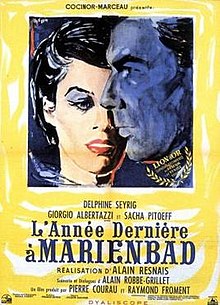 Story of movie Last Year At Marienbad :
Story of movie Last Year At Marienbad :